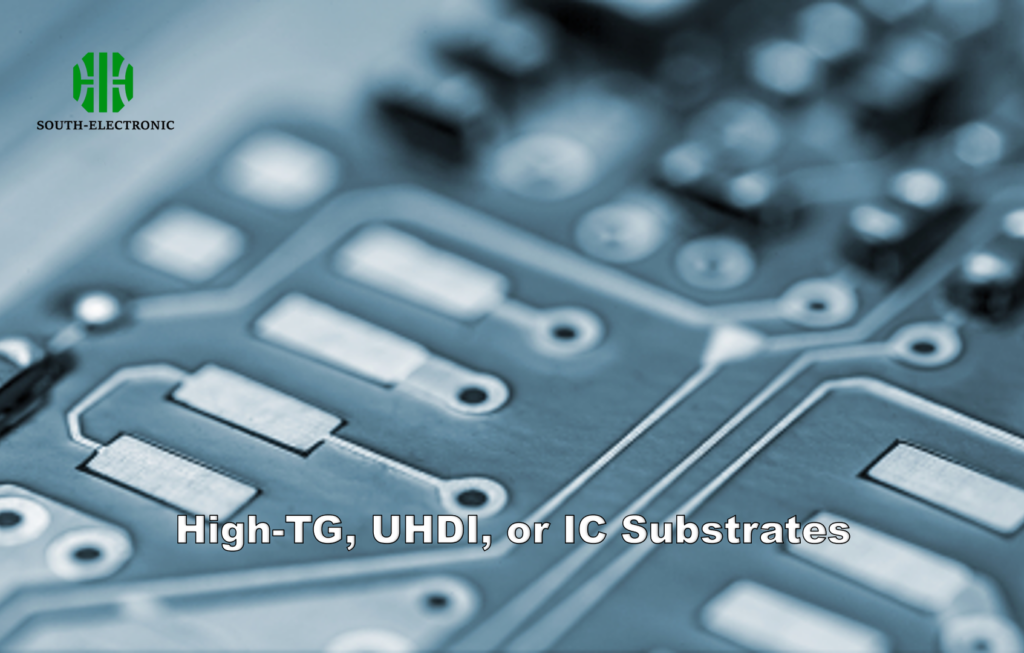Your 5G device overheats. High-speed signals distort. Components keep shrinking. Traditional FR-4 materials hit physical limits as electronics advance – what’s breaking these barriers?
Advanced PCB materials[^1] like ultra-low-loss UHDI substrates and thermally stable IC laminates solve signal degradation, heat dissipation, and density challenges in AI, automotive, and 5G systems, enabling faster, smaller, and more reliable next-gen devices through optimized dielectric properties and thermal management.
But why do these materials matter for your specific project? Let’s dissect four critical considerations – from material selection criteria to industry-specific innovations – that separate cutting-edge electronics from obsolete prototypes.
Why Are Advanced PCB Materials Critical for Next-Gen Electronics?
A 2025 IPC report shows 68% of high-frequency PCB failures stem from material limitations. Next-gen applications demand more than copper-clad laminates.
Advanced PCB materials enable >100 GHz signal transmission, <0.002 dielectric loss[^2], and 260°C+ thermal stability[^3] – critical for 5G mmWave, AI accelerators, and autonomous vehicle controllers where traditional materials cause signal loss, delamination, and thermal runaway.
)
Material Performance Benchmarks
| Property | FR-4 | High-TG | UHDI Substrate |
|---|---|---|---|
| Dk (@10 GHz) | 4.5 | 3.8 | 3.2 |
| Df (x10^-4) | 180 | 25 | 5 |
| T_g (°C) | 130 | 180 | 240+ |
| Thermal Conductivity | 0.3 W/mK | 0.8 W/mK | 1.5 W/mK |
| Line/Space (μm) | 50/50 | 30/30 | 10/10 |
Next-gen materials excel where FR-4 fails:
- Signal Integrity[^4] – Ultra-low loss tangent (Df) maintains signal clarity at 28+ GHz
- Thermal Management[^5] – High glass transition temps (T_g) prevent warping in reflow processes
- Density – Sub-15μm traces enable HDI designs for wearable/medical devices
High-TG, UHDI, or IC Substrates: Which Material Fits Your Project?
Choosing between a $12/sheet High-TG laminate[^6] and $200/sheet UHDI substrate? Your application’s frequency, thermal needs, and budget dictate the answer.
Select High-TG for cost-sensitive power electronics (<6 GHz), UHDI for mmWave RF designs (24-77 GHz), and IC substrates for chip packaging needing 170°C TG
)
Application-Specific Material Matrix
| Application | Key Requirements | Recommended Material |
|---|---|---|
| 5G Base Stations | Low Df @28 GHz | Nelco N7000-13HT |
| AI Accelerators | High Thermal Conductivity | Isola I-Tera MT40 |
| Automotive Radar | CAF Resistance | Panasonic Megtron 7 |
| Medical Wearables | Flexibility + HDI | Dupont Pyralux AP |
| Consumer IoT | Cost-Effective HF | Shengyi S7439 |
Three selection rules:
- Match Dk/Df to operating frequency – Higher frequencies need lower loss materials
- Align T_g with assembly processes – Lead-free soldering needs >170°C T_g
- Balance cost vs performance – Don’t overspecify; UHDI adds 30-50% cost over High-TG
How Do Advanced Materials Solve Signal Integrity Challenges?
Signal loss[^7] in 112G PAM4 interfaces can cost $12,000/hour in data center downtime. Advanced dielectrics fight this invisible enemy.
Low-Dk/Df laminates reduce skin effect losses by 60% at 56 Gbps, while smooth copper (1.5W/mK) | Graphene-enhanced laminates
)
Signal Integrity Solutions Breakdown
| Challenge | Material Solution | Performance Gain |
|---|---|---|
| Skin Effect Losses | Reverse-treated ED copper | 18% lower @40 GHz |
| Dielectric Absorption[^8] | Hydrocarbon-based laminates | 0.001 Df @10 GHz |
| Impedance Control | Tight-tolerance (±3%) Dk | ±2Ω deviation |
| Cross-talk | High-resin-content prepregs | -15 dB @56 Gbps |
| EMI Leakage | Embedded ferrite particles | 8 dB shielding boost |
Real-world implementation example:
A 77GHz automotive radar achieved 0.18dB/cm insertion loss using Megtron 6 vs 0.35dB/cm with standard FR-4 – doubling effective detection range while reducing false positives by 40%.
What Industries Are Driving Advanced PCB Material Innovation?
The $18B advanced PCB material market grows at 9.2% CAGR – led by these four sectors redefining technical boundaries:
5G infrastructure (35% demand), automotive radar (28%), AI servers (22%), and medical imaging (15%) drive material R&D. Each sector needs unique properties – from automotive’s thermal cycling endurance to medical’s biocompatible flex materials.
)
Industry-Specific Material Requirements
| Sector | Key Drivers | Emerging Materials |
|---|---|---|
| 5G/6G | mmWave frequencies | PTFE/Woven glass hybrids |
| Automotive | Vibration + thermal shock | Aluminum-based metal core |
| Aerospace | Radiation hardness | Polyimide-ceramic blends |
| Medical | Flex endurance (100k+ bends) | Liquid crystal polymer |
| AI Accelerators | Thermal conductivity (>1.5W/mK) | Graphene-enhanced laminates |
Automotive case study:
Tesla’s HW4.0 FSD computer uses Isola’s TerraGreen 400MHz material – 8-layer HDI with 3μm copper and 0.2mm microvias – achieving 50% size reduction versus previous HW3.0 boards while handling 72W power dissipation.
Conclusion
Advanced PCB material[^9]s bridge Moore’s Law limitations through dielectric innovation, thermal solutions, and precision manufacturing – empowering smaller, faster, and more reliable electronics across 5G, AI, and automotive sectors.
[^1]: Explore how Advanced PCB materials enhance performance and reliability in next-gen electronics, crucial for modern applications.
[^2]: Understanding dielectric loss is key to improving signal integrity in high-frequency applications, making this resource invaluable.
[^3]: Thermal stability is essential for preventing failures in high-performance devices; learn more about its significance in this context.
[^4]: Exploring Signal Integrity will provide insights into maintaining clarity in high-frequency applications, crucial for modern electronics.
[^5]: Understanding Thermal Management can help you choose materials that prevent warping and ensure reliability in high-temperature applications.
[^6]: Learning about High-TG laminates can guide you in selecting cost-effective materials for power electronics and other applications.
[^7]: Understanding signal loss is crucial for optimizing data center performance and minimizing downtime costs.
[^8]: Learn about Dielectric Absorption and its significant role in maintaining signal integrity in high-speed applications.
[^9]: Explore how Advanced PCB materials are revolutionizing electronics, enhancing performance and reliability across various industries.



